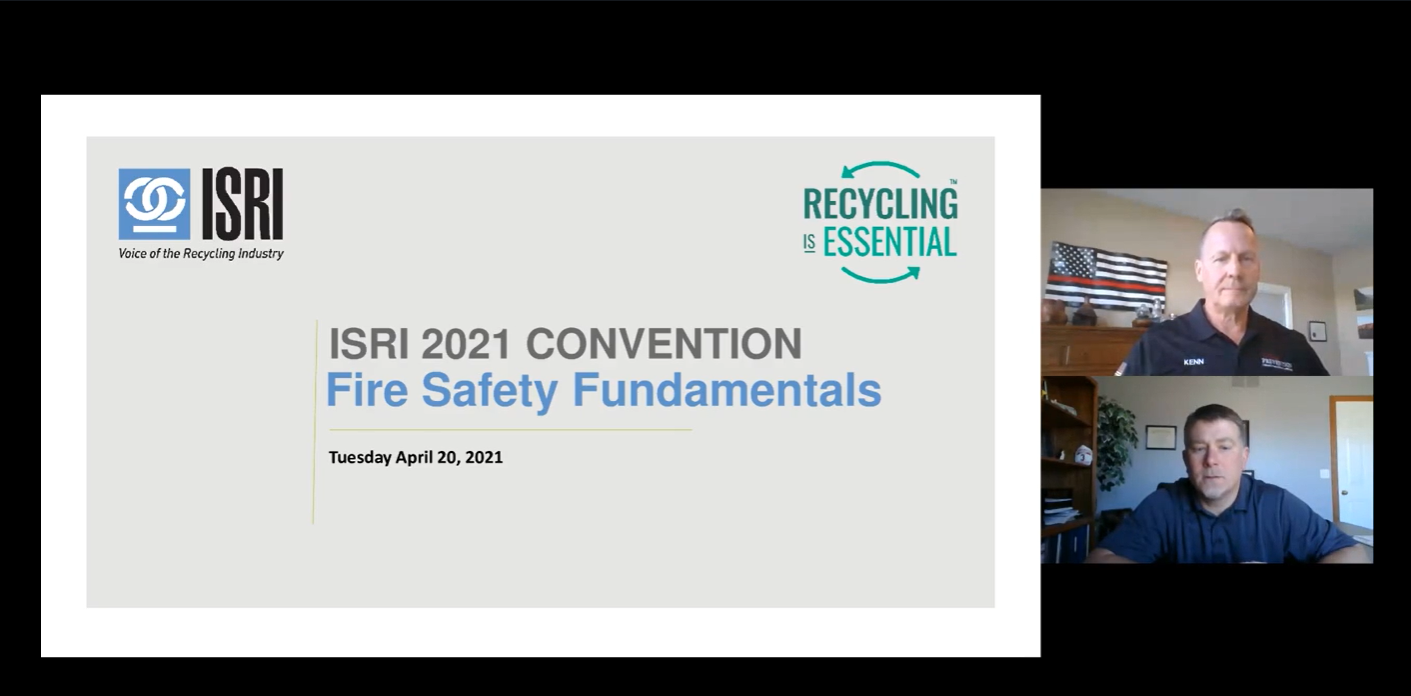The following article is from the Five Fundamentals for Fire Safety and Prevention in the Recycling Industries session during ISRI2021. If you would like to watch this session in its entirety, you can still register for ISRI2021 at https://isri2021.org. This session, along with others, are available to attendees on-demand.
A retired Battalion Chief with 30 years of experience, Kenn Kunze of IC Fire Prevention LLC has dedicated his “bonus round” career to fire prevention. For him, an overloaded electrical outlet isn’t just a code violation, “What I see is a potential disaster that could take place from that hazard,” he says.
Since 2015, Kunze’s company has worked with the recycling industry assessing fire risk and providing site visits and recommendations to clients. In this session Five Fundamentals for Fire Safety and Prevention in the Recycling Industries, Kunze outlines ISRI’s new Fire Prevention and Management Plan and five critical components of fire safety.
ISRI’s Fire Prevention & Management Plan
Created to serve as a guide rather than a standard, the document has three sections: fire prevention, fire response, and crisis management. Fire prevention includes steps to create a plan, how to make it effective, and best practices. Fire response describes emergency action plans and OSHA regulations that serve as a guide to safely responding to a fire. The crisis management section outlines how to deal with authorities and how to notify insurance companies and agencies like OSHA and the EPA.
Five Fire Safety and Prevention Fundamentals
Effective Fire Prevention and Emergency Action Planning
Fire Prevention: Make the plan brief. It should include the required information to make it effective. The plan should be about the specific site rather than a guide for an entire corporation. The fire prevention training should come from the plan. Supervisors would receive additional training based on their specific areas.
Kunze recommends a monthly audit to check the plan. “If you select a way to control electrical circuit overload, go around once a month to check if it’s working,” he says. Developing good training and a good audit will allow a facility to keep its fire prevention plan on the shelf all year.
Emergency Action Plan: It should outline how to respond to a fire and what to do as the situation progresses. The plan should serve as a guide for training. “No one should be running to the shelf to get the emergency action plan when there’s a fire,” says Kunze. Everyone should already know their role in a fire situation.
Pile Management Plan
A facility with large quantities of combustible materials should review and plan for pile management. Kunze recommends deciding how much material is necessary for the job even if that means ignoring the market’s recommendations. Plan ahead where and how to store the materials so the pile doesn’t grow too large and spread to valuable equipment or buildings. “Think of your pile like a teenager,” Kunze says. “You can’t control a teen but you should still put some guidelines or limits on their actions.”
Employee Engagement
Good fire prevention requires employee engagement. “Their hands are right where a hazard might be created and they’re mostly likely affected by an emergency,” says Kunze. Supervisors should make sure employees understand their role in fire prevention, as those at the corporate or supervisor level can’t control all the risks without employee assistance.
Focus on the Little Things
Any fire can turn into a big fire, says Kunze. It’s usually due to a sequence of events, such as a lack of preparation, poor strategy, and a crew that failed to stay together. A series of little things line up in such a way to cause a problem. Focusing on the details will help take care of the big things. “You need to focus on every aspect of fire prevention to create a safe work environment,” he says.
Who is Really Responsible for Fire Safety and Prevention
While everyone has a role in fire safety, it’s important to understand who bears the main responsibility. Kunze recommends figuring out who will serve as the leader, similar to a ship’s captain. “If you have anyone who answers to you then you’re the captain,” says Kunze. “You’re responsible for the outcomes, so be a good captain.”
Additional Resources













